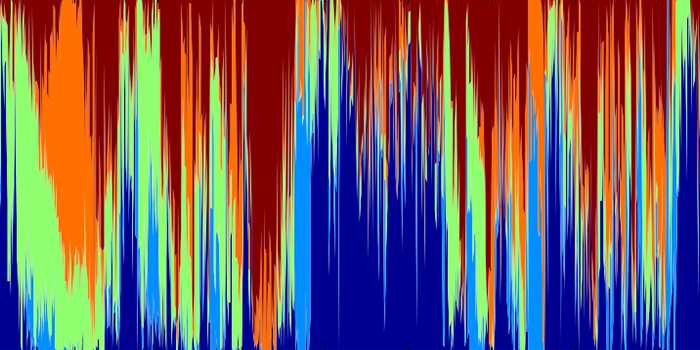There is increasing evidence to suggest that a particular sleep disorder producing abnormal movements during dream sleep may be an early marker for Parkinson’s disease. Working together, engineers and doctors are well on the way to developing a tool based on a number of electrophysiological markers that can identify future Parkinson sufferers—which in turn will open up opportunities to develop medicine that can stop the degradation process.
Parkinson’s disease produces a range of very unpleasant symptoms. It is also, unfortunately, incurable, with a slow, gradual onset. By the time patients detect something wrong and go to the doctor, they have already lost a large part of their brain cells.
Consequently, it would be a huge step forward if we could identify signs of the disease and treat it with inhibitor medicines much earlier than is currently the case. Denmark is at the forefront of such research—among other things due to fruitful collaboration between Associate Professor Helge Bjarup Dissing Sørensen, head of the Biomedical Signal Processing research group at DTU Electrical Engineering—and Professor Poul Jennum, Chief Physician and head of the Danish Centre for Sleep Medicine, Department of Clinical Neurophysiology at Rigshospitalet Glostrup, Denmark.
Sleep stages key to diagnosis
The Danish centre for Sleep Medicine receives patients with a wide variety of sleep disorders—sleep apnoea and chronic fatigue syndrome being by far the most common among them.
The studies performed here are based on a method dating back to the 1920s, when researchers discovered that by measuring the bioelectric activity of the brain—among other things—it was possible to diagnose sleep disorders.
The signals say something about which of the five stages of sleep the patient finds himself in—wakefulness, REM (dream sleep), non-REM 1, 2, or 3. For many years, the measurements were printed out on paper and analysed manually by the doctors who—at 30-second intervals—decided which of the five stages was applicable to the patient. Such an analysis of a full night’s measurement takes between four and five hours.
In the 1980s, researchers began using computers to analyse the measurements, opening up the possibility for far more detailed analyses of the sleep stages, which are not nearly as clearly defined as the old analyses suggested. And this is where the engineer comes into the picture.
Helge Sørensen and his research group in biomedical signal processing develop algorithms, which in a matter of minutes can analyse brain, eye, and muscle signals and show the various sleep stages and the transitions between them.
This paves the way for a new diagnostic tool which—among other things—can identify Parkinson’s disease 10-15 years earlier than normal.

By registering the brain’s electrophysiological signals in the course of a night, researchers can gain an overview of a person’s sleep patterns. The colours represent different sleep stages—and the distribution of the colours can point to possible diseases, including Parkinson’s disease.
Muscle movements during dream sleep
In deep sleep in the so-called REM phase, you are normally paralyzed from the brainstem down, so you do not react inappropriately to dreams, and the brain is completely free to clean up and wash away toxins. However, researchers believe that the contacts between the different sleep stages may be one of the first things to be destroyed by Parkinson’s disease. Therefore, there are strong indications that the sleep disorder IRBD (idiopathic Rapid-eye movement sleep Behaviour Disorder) may be the first marker for the dreaded illness.
Thus, it makes good sense to combine the two things and by means of the new signal processing techniques develop an actual biomarker for Parkinson’s disease. And as a result of what they themselves characterize as a fruitful ping-pong between Helge Sørensen’s engineering, mathematical approach on the one hand—and Poul Jennum’s medical, clinical approach on the other—the two researchers have also succeeded in developing an algorithm that can estimate whether a IRBD patient actually has early onset Parkinson’s disease.
The algorithm is patented, but as it may take 10-15 years before the newly diagnosed patients experience the known symptoms of the disease, it is, of course, necessary to monitor them over a period of years to fully assess the tool—which in specific terms—displays colour images of the measured person’s sleep patterns. Researchers at Lundbeck are closely involved in the work so they can immediately initiate the development of medicine, hopefully slowing down the progression of the disease.